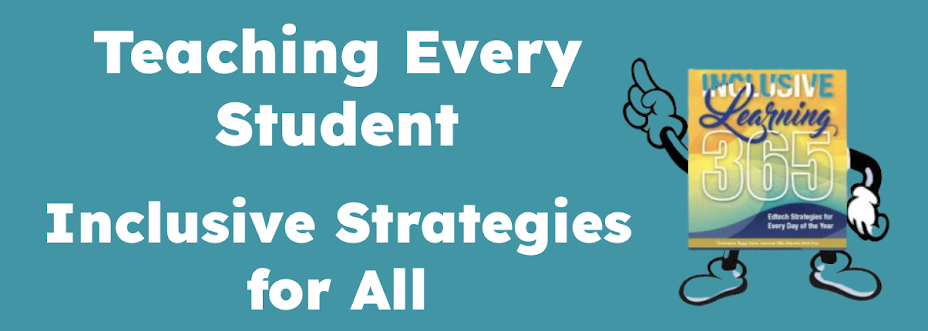The only way to allow students to assemble this essential toolbelt for information and communication is to to throw open your classroom and let the world in. How will your students know which calendar works for them - the one on their phone, Google Calendar with SMS appointment texting, Microsoft Outlook, or any of a dozen paper systems unless you allow them to try them out? How will your students know whether they 'get' a novel better by listening to an audiobook, or reading it on paper, or using text-to-speech, if you don't let them experience all repeatedly and help them decide? Will their choice be the same when they are reading history texts? Math texts? Again, how will they know? How will they know which is the best way for them to write, by hand (either on paper or on a tablet system), by keyboard (and which keyboard), or by voice, if they do not get to try out all the kinds of writing they need to do with all these tools?With Toolbelt Theory in mind and thanks to a tweet from Paul Hamilton, I learned about a great post that needs to be shared. 100 Helpful Web Tools for Every Kind of Learner details specific tools according to learning style. Are you a Visual Learner? Auditory Learner? Kinesthetic Learner? Each category is covered and tools are described so that you can determine what works best for you. Most people are a combination of learning styles, so there will be a great deal of overlap.
They won't know. And you - the school, the teacher, the education system - will have deprived them of these essential skills.
The post is written for college students and helps them identify tools that promote their own learning success. K-12 teachers can review the list and apply the tools considering the learning styles of the students in their classrooms.
It's not an exhaustive list for teachers - for example, one of my favorites, VoiceThread, isn't listed. VoiceThread IS a tool for every kind of learner; it's great for differentiated instruction and helps kids demonstrate what they know, no matter what their strengths or areas to strengthen. But that's the difference between providing kids with tools for their toolbox and providing teachers with tools for their instructional toolbox.
And a number of other free text-to-speech (TTS) tools exist that aren't mentioned in the post. (My post Free Tech Toolkit for UDL in All Classrooms includes additional free TTS).
Keep building your own instructional toolbox and empower your students with suggestions that they will want to try. The summer is a great time to explore new possibilities to be equipped for the next school year.

3 comments:
Thanks Karen, I love being linked to these kinds of lists, and I love how we are building the knowledge of these tools together.
So one thing that I think is important, we need to share with our students the ways we learn. We need to help them build their own information networks. As we say, the technology you "teach" now will be ancient history when these kids are 20. They need to know how to do it themselves.
Karen,
I agree with you about Voicethread. I teach a class of struggling/reluctant teenaged learners who panic when they have to write a paragraph to demonstrate what they have learned. They loved VoiceThread and did a great job on their research project. They were so proud when they presented their work and saw it up on the big screen.
oops for got to leave my web url www.teachersatrisk.com
Post a Comment